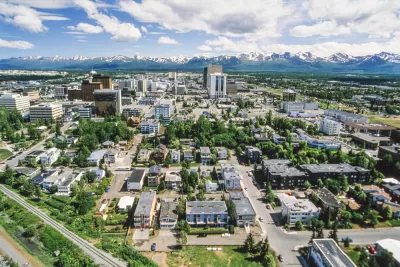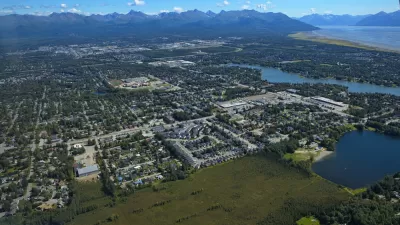A revised, scaled-back version of a zoning reform effort in Anchorage would concentrate the proposed consolidation of residential zoning districts in one part of the city.

Anchorage Assemblymembers have scaled back the zoning consolidation proposed by the “Housing Opportunities in the Municipality for Everyone” (HOME) an initiative that previously would have reduced the number of residential zoning district’s in the city to one.
Anchorage Assembly members Meg Zaletel and Daniel Volland have revised the proposed zoning changes into a more “targeted” approach, according to a paywalled article by Alex DeMarban for the Anchorage Daily News.
“The new proposal would still sharply reduce the city’s residential zoning categories, from 15 to five, but it would be based on land-use categories spelled out in the 2040 land-use plan adopted six years ago,” writes DeMarban, citing a document published ahead of an assembly meeting scheduled for August 22.
Instead of combining all residential zoning into one district, as proposed in the earlier version of the HOME initiative, the revised proposal “would only apply to the Anchorage Bowl, not Eagle River and Girdwood,” adds DeMarban.
“The original proposal would have shrunk the city’s residential zones to essentially one category, divided only by areas with city-provided plumbing and areas like those near the Hillside that use wells and septic systems,” adds DeMarban. “It also proposed a 1 1/2-year process to rewrite residential sections of Title 21, the land-use code, a period critics said was far too short.”
More details on how the revised HOME initiative reflects the vision laid out in the city’s 2040 land use plan are included in the source article.
FULL STORY: Addressing criticism, Assembly members propose more modest overhaul of Anchorage zoning

Planetizen Federal Action Tracker
A weekly monitor of how Trump’s orders and actions are impacting planners and planning in America.

Congressman Proposes Bill to Rename DC Metro “Trump Train”
The Make Autorail Great Again Act would withhold federal funding to the system until the Washington Metropolitan Area Transit Authority (WMATA), rebrands as the Washington Metropolitan Authority for Greater Access (WMAGA).

The Simple Legislative Tool Transforming Vacant Downtowns
In California, Michigan and Georgia, an easy win is bringing dollars — and delight — back to city centers.

The States Losing Rural Delivery Rooms at an Alarming Pace
In some states, as few as 9% of rural hospitals still deliver babies. As a result, rising pre-term births, no adequate pre-term care and harrowing close calls are a growing reality.

The Small South Asian Republic Going all in on EVs
Thanks to one simple policy change less than five years ago, 65% of new cars in this Himalayan country are now electric.

DC Backpedals on Bike Lane Protection, Swaps Barriers for Paint
Citing aesthetic concerns, the city is removing the concrete barriers and flexposts that once separated Arizona Avenue cyclists from motor vehicles.
Urban Design for Planners 1: Software Tools
This six-course series explores essential urban design concepts using open source software and equips planners with the tools they need to participate fully in the urban design process.
Planning for Universal Design
Learn the tools for implementing Universal Design in planning regulations.
Smith Gee Studio
City of Charlotte
City of Camden Redevelopment Agency
City of Astoria
Transportation Research & Education Center (TREC) at Portland State University
US High Speed Rail Association
City of Camden Redevelopment Agency
Municipality of Princeton (NJ)




























